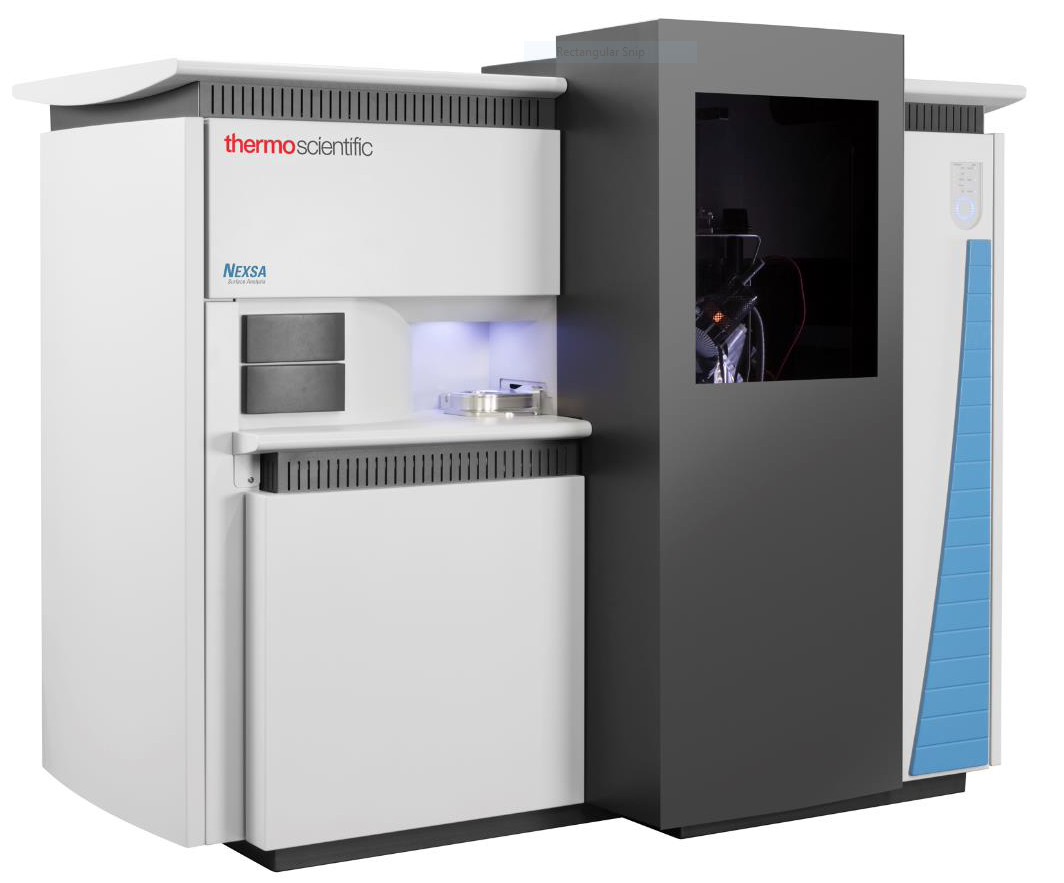Specific Process Knowledge/Characterization/XPS/Nexsa
Feedback to this page: click here
The XPS Nexsa
Name: XPS Nexsa
Vendor: Thermofisher Scientific
The XPS Nexsa offers a variety of surface analysis techniques in addition to its main XPS technique.

The user manual(s), user APV(s), technical information and contact information are be found in LabManager:
Process information
XPS is a well established technique at DTU Nanolab; we know what we can get from it and so do the users. The situation is slightly different with the other analytical techniques that the Nexsa offers. These options were not added because we have an urgent need for them in some project - rather, we chose to add them because we got an irresistible offer. Also, should any need for them arise in the future, the price of adding them once the instrument left the factory would be a lot higher. As a result, we don't have any applications waiting to explore what they can offer.
It is clearly in everybody's interest that the techniques are explored - that we throw all kinds of samples at them and that we investigate what kind of knowledge we can extract. Ideally, all this knowledge that we require should be shared among all the users. We therefore strongly urge you to take a look at the techniques on the pages listed below. Here, we will collect technical information and publications.
- The XPS technique
- Ion Scattering Spectroscopy or ISS
- Reflected Electron Energy Loss Spectroscopy or REELS
- Raman spectroscopy
- Ultraviolet Photoelectron Spectroscopy or UPS)
Getting access to the XPS
Click HERE to see information on how to get access to the XPS.
Performance of XPS Nexsa
| Purpose | Chemical analysis |
|
|---|---|---|
| Performance | Spot size | Can be set between 30µm - 400µm |
| Probing depth | Depending on probed element. Max probe depth lies within 10-200 Å. | |
| Resolution | Dependent on probed elements. Concentrations down to about 0,5 atomic % can in some cases be detected. | |
| Charge compensation |
Flood gun can be used for charge compensation of non conductive samples | |
| Finding structures | Choose measuring spot from camera image (magnified) | |
| Depth profiling | Purpose | With ion beam etch the top layer of the material can be removed, to do a depth profiling |
| Ion beam size | About 3x1 mm | |
| Substrates | Substrate size |
Maximum 60x60 mm |
| Substrate thickness |
Maximum height about 20 mm |
